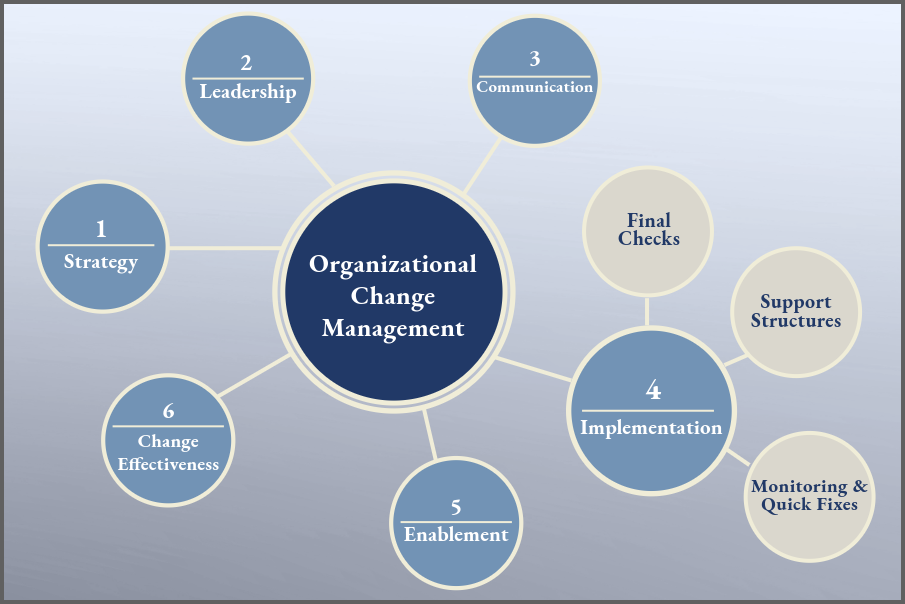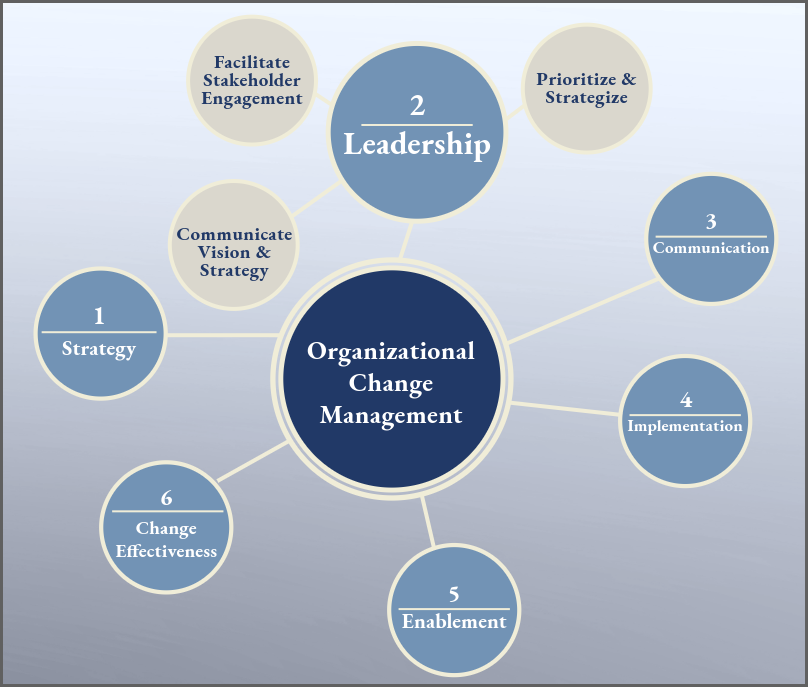Organizational Change Management Consultant Alaina Mazurkiewicz concludes her OCM blog series:
As we conclude our blog series on SAP Organizational Change Management (OCM), it’s crucial to focus on measuring the effectiveness of the change initiatives undertaken in order to ensure we’re delivering the best possible services. This final stage, change effectiveness, is where organizations assess whether the implemented changes have met intended objectives and delivered the expected value to the business. This post explores the strategies and methodologies to effectively measure change, ensuring that the SAP implementation not only achieves designated goals but also sustains long-term success.

Setting the Foundation for Measuring Change Effectiveness
The first step in assessing change effectiveness is to establish clear, measurable objectives during the initial stages of the OCM process. These objectives should be aligned with the broader business goals and should provide a baseline against which the impact of the SAP implementation can be evaluated.
- Define Success Metrics: Develop specific, quantifiable metrics that reflect the critical success factors of the SAP project. These could include performance indicators such as system utilization rates, process efficiency improvements, and user satisfaction levels.
- Baseline Data Collection: Before implementing changes, collect baseline data to provide a point of comparison. This data will serve as a benchmark to measure the actual impact of the SAP system once it is fully operational.
Implementing Tools for Continuous Assessment
To measure the effectiveness of official change, organizations must implement tools and systems that allow for continuous monitoring and evaluation.
- Feedback Systems: Utilize surveys and interviews to gather feedback from end users about their experiences with the SAP system. This qualitative data can provide insights into areas that need adjustment and highlight the success stories that can be built upon.
- Analytics and Reporting Tools: Leverage SAP’s built-in analytics capabilities to track usage patterns, completion of key processes, and adherence to new workflows. These tools can provide quantitative data that is crucial for measuring the effectiveness of the change.
- Regular Reviews and Audits: Schedule regular reviews and audits to assess the system’s performance and the effectiveness of the training and support structures. These reviews should be conducted at multiple levels, from technical audits of the SAP system to organizational assessments of change adoption.

Leveraging Learnings to Foster Continuous Improvement
The ultimate goal of measuring change effectiveness is not just to assess whether objectives have been met but also to identify opportunities for continuous improvement.
- Document Lessons Learned: Create a formal process for documenting lessons learned throughout the SAP implementation. This should include both successes and challenges, providing a roadmap for future change initiatives.
- Adjust Strategies Based on Insights: Use the insights gained from measuring effectiveness to refine and adjust strategies. This might involve enhancing training programs, tweaking the SAP configuration, or altering support mechanisms to better serve user needs.
- Promote a Culture of Adaptability: Encourage a culture where feedback is valued and used constructively to make continuous adjustments. This adaptability is crucial in ensuring that the organization remains responsive to evolving business needs and technological advancements.
Measuring change effectiveness is a critical component of ensuring that the significant investments in time, money, and resources deliver the expected returns. It provides the necessary feedback loop to refine and optimize processes, enhancing not only the current implementation but also providing valuable insights for future projects.
As we conclude this blog series on SAP Organizational Change Management, it’s clear that the journey of change is ongoing. By effectively measuring and adapting to the outcomes of SAP implementations, organizations can ensure sustained success and continued alignment with their strategic business objectives. This approach not only maximizes the benefits of current SAP solutions but also strengthens the organization’s overall change management capabilities, preparing it for future challenges and opportunities. If you’re looking for an SAP OCM solutions provider, reach out to us via email. And as always, we invite you to follow us on LinkedIn to stay updated on the latest Vortex news and happenings. Thank you for joining us on our SAP OCM blog series.
Follow these link to other posts in our OCM blog series:
Change Management Strategy: OCM Blog Series, Part I
Effective Change Leadership: OCM Blog Series, Part II
Effective Change Communication: OCM Blog Series, Part III
Successful Change Implementation: OCM Blog Series, Part IV
Successful Change Enablement: OCM Blog Series, Part V










 A change management strategy serves multiple critical functions:
A change management strategy serves multiple critical functions: